
Washington University Medical Center
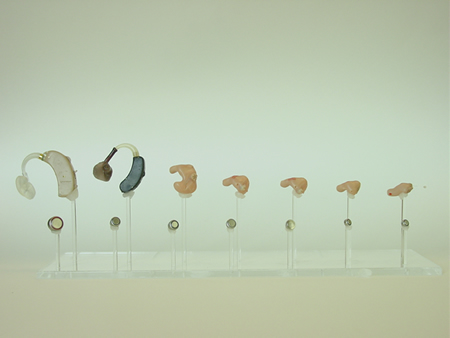 © Bernard Becker Medical Library
© Bernard Becker Medical Library
The Evolution of Hearing Aids and Batteries
Increasing miniaturization of hearing aids and batteries
can
be seen in this photograph.
Phonak Watch Pilot and Claro, 2000
Along with enhanced, customized performance, digital technology has introduced an additional hearing aid component: a remote-control unit used to select from among pre-programmed sound processing options. These units, usually designed to be tucked into a pocket, are also available in a working wristwatch model. In contrast to similar devices of the 1950s, the emphasis is on convenience and performance, rather than concealment.
Songbird Disposable Hearing Aid, 2000
Tiny disposable CIC models are another recent attempt to bring convenience and affordability to a hearing aid market that is expected to grow as the population ages. It is yet to be seen whether this trend will reach sales comparable to those of disposable contact lenses.
The Good Life
While hearing aid advertisements during the later part of the 20th century emphasized the many technological options for hearing aid users, concealment is still a very familiar theme.
Hearing Aids as Art
Some hearing aids now feature flowers, leaves, and abstract designs.
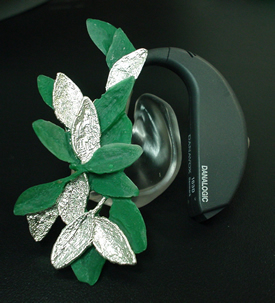 © Laboratorium Formaat/Petra Spigt and Annek Brouwer
© Laboratorium Formaat/Petra Spigt and Annek Brouwer
 © Laboratorium Formaat/Petra Spigt and Annek Brouwer
© Laboratorium Formaat/Petra Spigt and Annek Brouwer
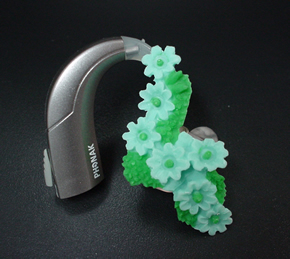 © Laboratorium Formaat/Petra Spigt and Annek Brouwer
© Laboratorium Formaat/Petra Spigt and Annek Brouwer
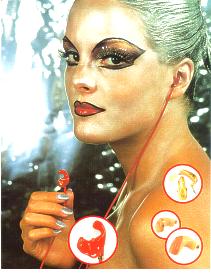
© Courtesy of Nikosonic
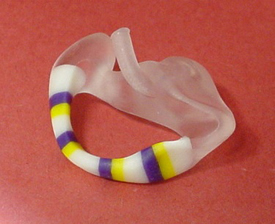 © Laboratorium Formaat/Petra Spigt and Annek Brouwer
© Laboratorium Formaat/Petra Spigt and Annek Brouwer
Phonak BTE Colored Casings
BTE casings are available in a variety of bright colors as shown in this image.
Earmolds
Earmolds are also available in many colors and with whimisical decoration such as polka dots and frogs.
 © Reprinted
© Reprinted
with permission from Arnoud Beem